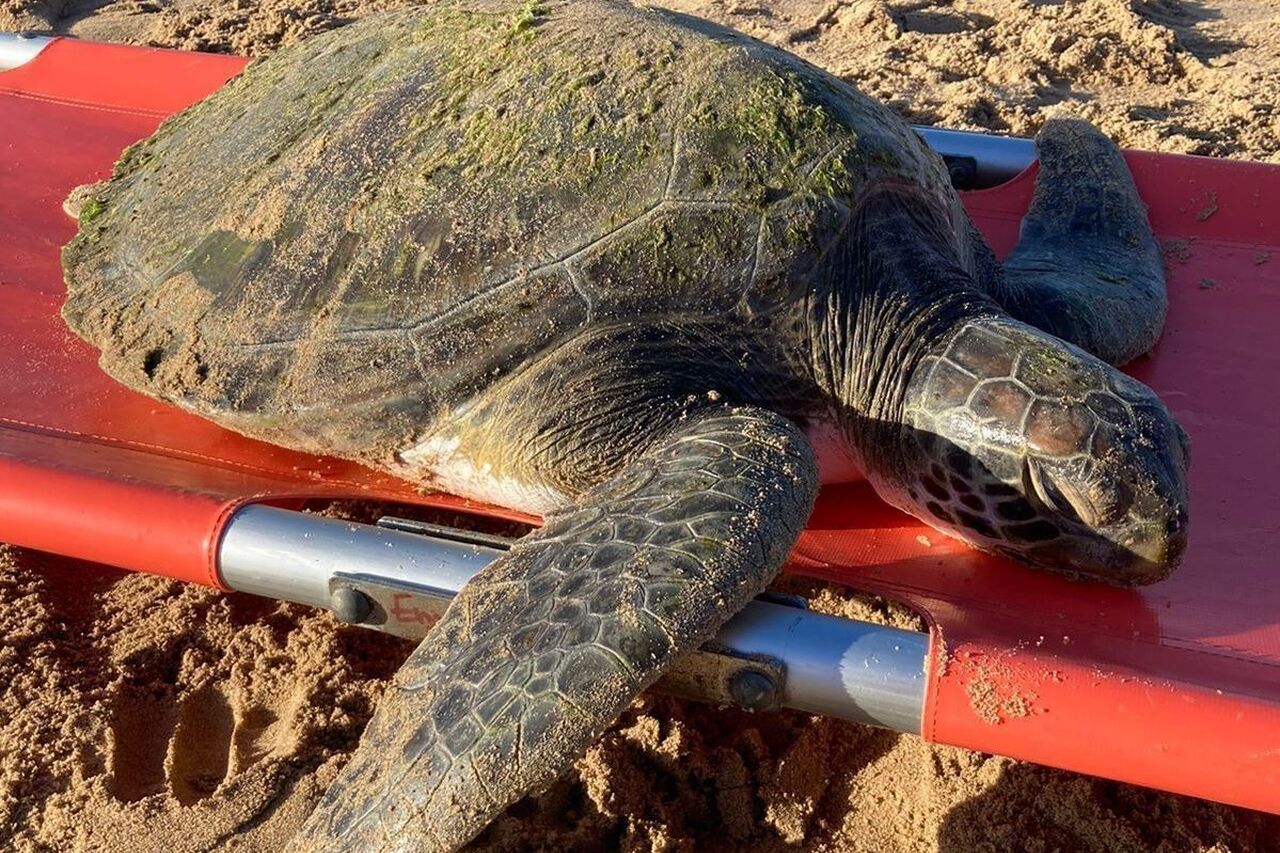Everything you need to know about green turtle season
Around this time of the year, our team at the Two Oceans Aquarium Foundation’s Turtle Conservation Centre starts preparing for the “green season”. Just like turtle hatchlings tend to strand more frequently at particular times of the year, we experience a similar phenomenon with subadult green turtles.
Let’s learn all about the green season and what it means for our turtle team.
What is “green season”?
“Green season” refers to the annual trend of subadult turtles stranding along the South African coastline. It was nicknamed “green season” in the turtle community as mostly green turtles appear to strand during this time. Typically, this subadult stranding season starts strongly in September before tapering and coming to an end around February.
Through past years of data collection, our Turtle Conservation Centre and its Turtle Rescue Network have made some fascinating insights into the “green season”.

Why does the green season happen?
As green turtles do not nest in South Africa, the seasonal pattern of their stranding along our coastline (and the broader African coast) is very interesting to observe. There is little research into this phenomenon, making it difficult to grasp why green turtles appear to strand in such numbers from September.
However, we can make some observations that have the potential to connect to the occurrence of green season.
Visitors to the abundant West Coast: Green turtles are a highly migratory species of sea turtle and have the largest distribution in the Western Indian Ocean. They are also incredibly loyal to their foraging grounds, remaining in some areas for up to seven months at a time. Particularly on South Africa’s West Coast, current upwelling provides abundant and nutrient-rich ecosystems for visiting green turtles. It is possible that green turtles visit these waters to feed during their ocean travels, where they might strand due to the rougher seas and colder temperatures.
Human-induced injuries: During the early adult phase of their lives, green turtles tend to live in shallower, reefed areas along the coast, where they can take advantage of abundant foraging grounds. Unfortunately, this coastal lifestyle and closer proximity to human activity put green turtles at a higher risk of man-made hazards.
Our Turtle Conservation Centre has witnessed green turtles stranded with a wide range of ailments. Among these are entanglement and boat strikes. With the onset of warmer weather in September, increased human activity along the coast could correlate with more green turtles being stranded due to human-induced hazards such as entanglement in ghost fishing gear, injury from boat propellers, and plastic ingestion.
Nesting grounds in Madagascar: In Madagascar, the green turtle nesting period is from June to October – this period falls within what we experience as the green season. In spring, heavy rainfall comes to the east and south coasts of Africa. The fast-flowing and broadening Agulhas Current, lying between South Africa and Madagascar’s coastline, could contribute to the potential of green turtle strandings during this time.
Although we cannot be certain why green turtles strand along our coastline from September onwards, we can make a difference in their futures! The Turtle Conservation Centre has successfully rescued, rehabilitated, and released many green turtles in the past, and we will continue to do so with the help of our turtle community.
How can members of the public help?
“As always, we rely on having eyes on the beaches to find these precious patients,” says Tracy Whitehead, Turtle Rescue Network Coordinator.
Unlike hatchling season, where it’s almost guaranteed that someone will find a turtle or two while on the beach, green season is unpredictable. It’s tough to pre-empt when and where to send people to look for stranded green turtles along the beaches. This is why awareness is so important – from September onwards, we need eyes on the beaches who know to inform us if they find a turtle.
So, if you find a stranded subadult turtle along the beach, here are two things to do immediately.
- Do not put the turtle back in the water, and do not leave it unattended.
- Phone our Turtle Rescue Network Hotline on 083 300 1663 immediately.
Our Turtle Rescue Network Coordinator will walk you through the process of getting the turtle to safety with the help of your closest Turtle Rescue Network point.
Without this continuous help, stranded turtles could lie stranded and unfound. The sooner they are found and taken to our Turtle Conservation Centre, the more chance they will survive. We couldn't do our work without our incredible network of turtle supporters: Please remember to keep an eye out on the beaches for the coming months - you could help us to save this endangered species and give them a brighter future.
Some green turtles you may recognise...

Luna was rescued in February 2024 from Port Nolloth in the Northern Cape. Her long, moonlit journey to the safety of our Turtle Conservation Centre is the reason for her name. Although it took her a while to start eating, Luna has made incredible progress, and is now in the final phase of rehabilitation in the I&J Ocean Exhibit!
Bokkie, our amputee turtle, was rescued in Struisbaai Plaat in October 2023, the day after the South African national team won the Rugby World Cup semi-final. During rehabilitation, Bokkie excreted over 47 pieces of plastic! She is now in the final phase of rehabilitation and will soon return to the ocean.
Nori was rescued in Witsand in May 2023. Her rehabilitation has been tricky, with neurological issues and some blindness in her right eye. Thankfully, Nori has been recovering well and is in the final phase of rehabilitation in the I&J Ocean Exhibit.
Related News
Sign up to our Newsletter
Receive monthly news, online courses and conservation programmes.





